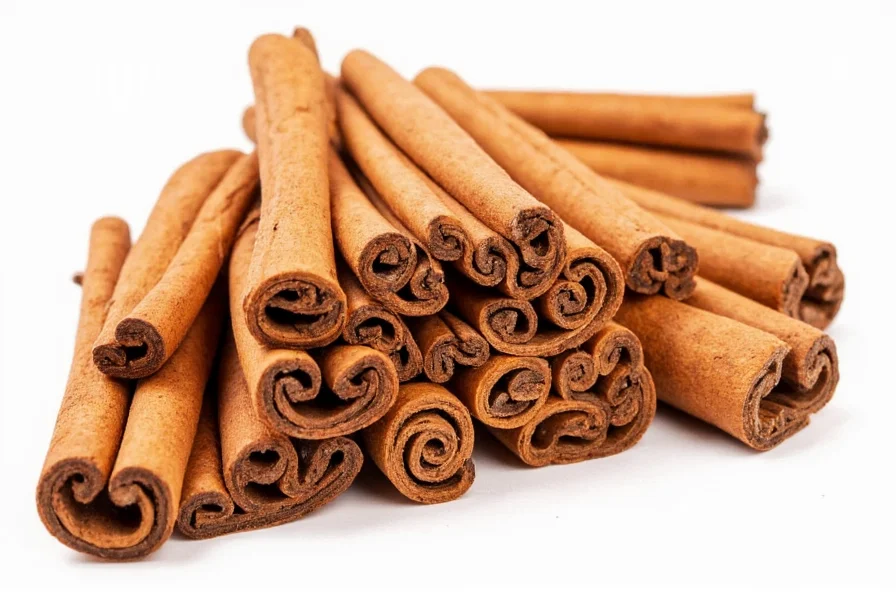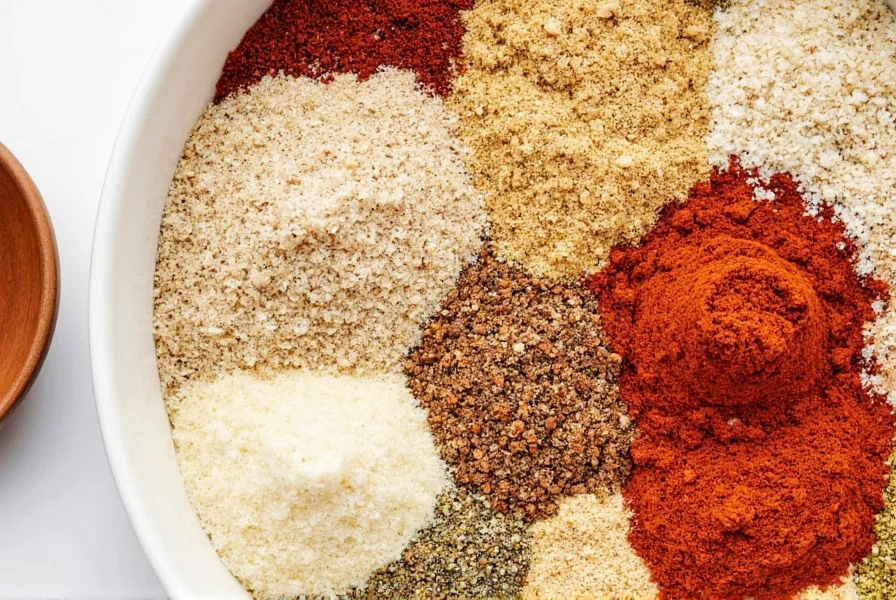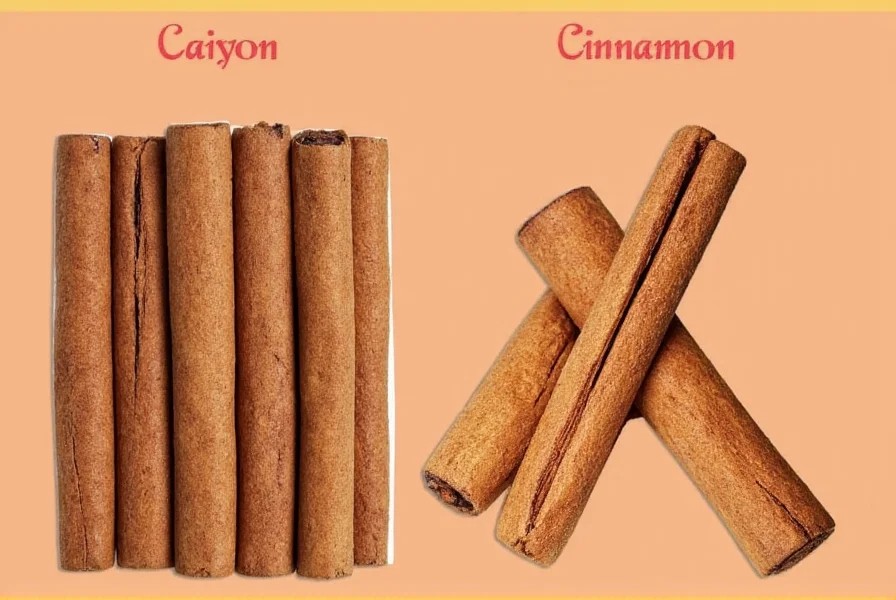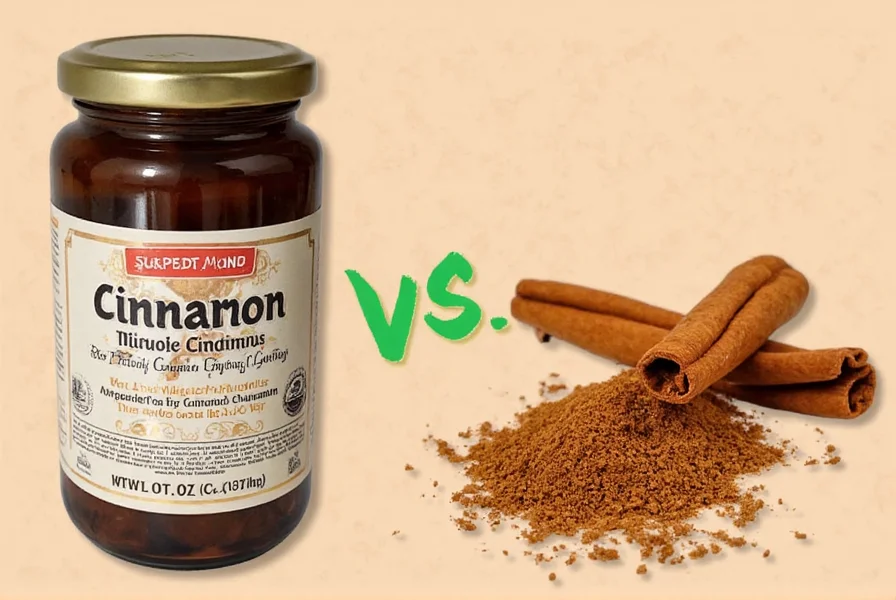Is Saigon cinnamon the same as Ceylon cinnamon? The short answer is no. These two cinnamon varieties differ significantly in origin, flavor, and health implications. This guide explains key differences to help you choose the right cinnamon for your kitchen needs.
| Feature | Saigon Cinnamon | Ceylon Cinnamon |
|---|---|---|
| Origin | Vietnam | Sri Lanka |
| Scientific Name | Cinnamomum cassia | Cinnamomum verum |
| Appearance | Thicker, darker, harder sticks | Thin, light brown, brittle layers |
| Flavor Profile | Strong, spicy, slightly bitter | Mild, sweet, delicate |
| Coumarin Content | High (up to 1,000x more than Ceylon) | Very low (safe for regular consumption) |
| Best Uses | Meat dishes, stews, bold baking | Delicate desserts, pastries, daily consumption |
What Is Cinnamon?
Cinnamon comes from the inner bark of trees in the Cinnamomum genus. While many people use "cinnamon" as a single term, there are actually several varieties. The two most common types found in grocery stores are Saigon cinnamon (Cinnamomum cassia) and Ceylon cinnamon (Cinnamomum verum). These varieties have different origins, flavors, and health implications that significantly impact their culinary uses.

Key Differences Between Saigon and Ceylon Cinnamon
Understanding these differences is crucial for selecting the right cinnamon for your needs:
- Origin and Scientific Classification: Saigon cinnamon comes from Vietnam (Cinnamomum cassia), while Ceylon cinnamon comes from Sri Lanka (Cinnamomum verum). Ceylon is the "true cinnamon" recognized in botanical classification.
- Coumarin Content: This is the most important health consideration. Saigon cinnamon contains high levels of coumarin (up to 1,000 times more than Ceylon), which can be harmful in large quantities. Ceylon cinnamon has negligible coumarin, making it safer for regular consumption.
- Physical Characteristics: Ceylon cinnamon sticks are thin, layered, and brittle, while Saigon cinnamon sticks are thick, hard, and single-layered.
- Flavor Profile: Saigon has a strong, spicy, slightly bitter flavor, while Ceylon offers a milder, sweeter, more delicate taste.

Which Cinnamon Should You Choose?
For Daily Consumption and Health Considerations
Ceylon cinnamon is the clear choice for regular, daily use due to its extremely low coumarin content. The European Food Safety Authority recommends limiting coumarin intake to 0.1 mg per kg of body weight per day. With Saigon cinnamon's high coumarin levels, consuming just 1-2 teaspoons daily could exceed this limit for many people.
For Baking and Desserts
Ceylon cinnamon is generally preferred for delicate pastries, cakes, and desserts because its mild, sweet flavor won't overpower other ingredients. Its delicate aroma complements fruits, chocolate, and dairy-based desserts beautifully.
For Meat Dishes and Bold Flavors
Saigon cinnamon works well in savory applications like chili, stews, and braised meats where its strong, spicy flavor can stand up to other robust ingredients. However, use it sparingly due to its high coumarin content.
How to Identify Genuine Ceylon Cinnamon
- Appearance: Ceylon sticks are thin, layered, and fragile - they'll break easily when bent. Saigon sticks are thick, hard, and single-layered.
- Color: Ceylon is lighter brown, while Saigon is darker reddish-brown.
- Smell: Ceylon has a sweeter, more floral aroma, while Saigon has a stronger, more pungent scent.
- Labeling: Look for "Cinnamomum verum" or "True Cinnamon" on the packaging. Avoid products labeled simply "cinnamon" without specification.

Common Mistakes to Avoid
- Using Saigon cinnamon for daily consumption: Its high coumarin content makes it unsuitable for regular, daily use. Ceylon is the safer choice for everyday cooking.
- Assuming all "cinnamon" is the same: Many products labeled simply "cinnamon" are actually Saigon cinnamon. Always check the label for specifics.
- Using too much cinnamon: Cinnamon is potent. Start with small amounts and adjust to taste.
- Storing improperly: Keep cinnamon in an airtight container away from light and heat to preserve flavor and quality.

Is Saigon cinnamon the same as Ceylon cinnamon?
No, Saigon cinnamon (Cinnamomum cassia) and Ceylon cinnamon (Cinnamomum verum) are different varieties with significant differences in origin, flavor, and health implications. Saigon cinnamon has much higher coumarin content, making it less suitable for regular consumption.
Which cinnamon is better for baking?
Ceylon cinnamon is generally better for most baking applications due to its milder, sweeter flavor that complements desserts without overpowering other ingredients. Saigon cinnamon can be used for recipes where a stronger cinnamon flavor is desired, but use it sparingly due to its high coumarin content.
Is one cinnamon healthier than the other?
Yes, Ceylon cinnamon is significantly healthier for regular consumption because it contains up to 250 times less coumarin than Saigon cinnamon. Coumarin can be harmful in large quantities, so Ceylon is the safer choice for daily use. Both types offer health benefits including antioxidants, but Ceylon's low coumarin content makes it the better option for regular consumption.
How can I tell Saigon and Ceylon cinnamon apart?
Visually, Ceylon cinnamon sticks are thin, layered, and brittle - they'll break easily when bent. Saigon cinnamon sticks are thick, hard, and single-layered. Ceylon is lighter brown in color, while Saigon is darker reddish-brown. Ceylon has a sweeter, more floral aroma, while Saigon has a stronger, more pungent scent.
Can I substitute one for the other in recipes?
Yes, but with caution. If substituting Saigon for Ceylon, use about half the amount since Saigon is much stronger. If substituting Ceylon for Saigon, you might need to use slightly more to achieve the same flavor intensity. Be aware that the flavor profile will change - Saigon offers a more robust, spicy flavor while Ceylon provides a more subtle, sweet note. For health reasons, avoid using Saigon cinnamon for daily consumption.
Why is Ceylon called "true cinnamon"?
Ceylon cinnamon is called "true cinnamon" because it comes from the Cinnamomum verum tree (meaning "true cinnamon" in Latin), which is the species originally known as cinnamon in ancient times. Most cinnamon consumed in the United States and Europe is actually cassia (including Saigon), but Ceylon is considered the "true" variety by spice purists and in culinary traditions where authenticity matters.
Conclusion
Is Saigon cinnamon the same as Ceylon cinnamon? The answer is a clear no. While both come from the Cinnamomum genus, they have distinct differences in origin, flavor, and health implications. For regular consumption and health safety, Ceylon cinnamon is the superior choice due to its significantly lower coumarin content. Saigon cinnamon works well for specific culinary applications where a stronger flavor is desired, but should be used sparingly due to health concerns.
When shopping for cinnamon, always check the label for "Cinnamomum verum" or "True Cinnamon" to ensure you're getting the healthier Ceylon variety. With this knowledge, you can make informed choices that enhance both the flavor and safety of your cooking and baking.











 浙公网安备
33010002000092号
浙公网安备
33010002000092号 浙B2-20120091-4
浙B2-20120091-4